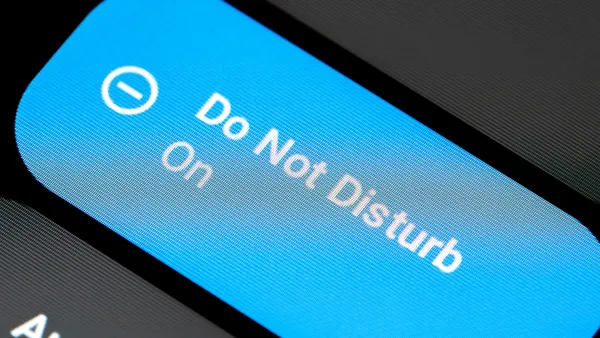Dive Brief:
- Consumers lost $330 million last year to text scams, many of them based on the fraudulent use of company identities, the Federal Trade Commission says.
- The losses came to a median $1,000 per scam, twice the amount in 2022 and five times the amount in 2019, showing how scammers are using texts as a go-to way to steal money or personal information, the FTC said in a data spotlight released this week.
- “Scammers use the speed of text communication to their advantage,” the FTC said. “They hope [consumers] won’t slow down and think over what’s in the message.”
Dive Insight:
The most frequent scams trade on the trust behind company identities to get past consumer defenses.
- Bank fraud prevention. Typical message: “Wells Fargo Bank Fraud Alert. Did you attempt to purchase at Walmart for $1,263.89? Reply YES or NO.” This scam has increased 20-fold since 2019, the agency said. Consumers who respond typically receive a follow-up communication that tries to get them on the phone, giving the scammers an opportunity to obtain their bank account information.
- Fake package delivery. Typical message: “USPS. Since your package address does not have a house number, we are unable to arrange home delivery for you. Please update online,” with link provided. FedEx and UPS are commonly named along with the U.S. Postal Service. Consumers clicking on the link are instructed to pay a nominal re-delivery fee, giving the scammers account information.
- Phony job offers. Typical message: “Whole Foods market is starting an exceptionally large research project in your area. This project happens each week, we select shoppers to function as a store evaluator. You will get $450 on every task. CLICK THE LINK BELOW TO PROCESS YOUR APPLICATION.” Walmart is another brand frequently used. Scammers often target consumers who post their resumes to job sites like Indeed. Consumers that follow through provide scammers information that can give them access to their accounts.
- Fraud prevention alerts. Typical message: “Transaction update: Your account is being debited for iPhone 13 USD $599.97. Not you? Call Amazon,” and a number is given. A fake store representative takes the call and tries to get remote access to the consumer’s phone on the pretense of fixing the account problem.
- Bogus gifts. Typical message: “ATT free msg: December bill is paid. Thanks, here’s a little gift for you,” with link provided. The text typically comes from a cell phone company or well-known retailer. After clicking the link, consumers are asked to pay a nominal shipping fee to receive the gift, giving scammers access to their account information.
“All five [scams] have one thing in common,” the FTC said. “They often work by impersonating well-known businesses.”











